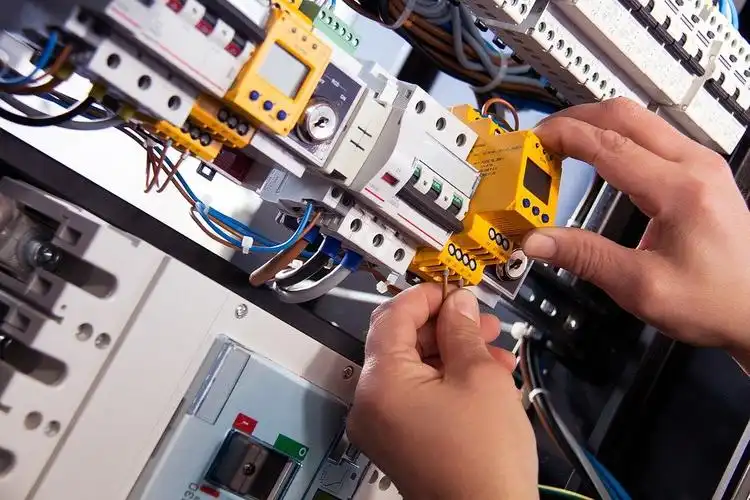Miniature circuit breakers are necessary safeguarding devices for household and industrial circuits, preventing electrical malfunctions such as overloads, short-circuits, and leakage. However, improper use or prolonged operation may lead to various kinds of failure. In this article, we will combine common failure cases and maintenance experience to provide you with a systematic diagnostic approach to help you solve the problem in a timely manner and ensure electrical safety.
miniature circuit breaker common fault forms and diagnosis methods
1.Frequent tripping of circuit breakers
Cause analysis:
Overload: the total of circuit current exceeds the rated value of the circuit breaker, common in simultaneous use of multiple high-power devices.
Short-circuit: the fire wire and zero wire direct contact, current surge, common in line damage or internal equipment failure.
Leakage: insulation breakdown of line or equipment caused by current leakage, leakage protector action.
Diagnostic Steps:
Observe tripping characteristics:
Air switch trip only (no sign of leakage): overload or short circuit.
Leakage protector trips together and indication is popped out: leakage fault.
Tap for troubleshooting:
Disconnect all loads and tap on appliances one by one to detect the faulty equipment.
Use a multimeter to detect the line resistance, if the resistance is almost zero, then the short-circuit.
Solution:
Reduce the simultaneous use of high-power equipment; replace the circuit breaker based on the rated current (e.g., kitchen high-power appliances are recommended to choose C40).
Repair the faulty line or replace the leakage equipment; if the leakage, ask a professional electrician to check the insulation.
2.Circuit breaker cannot be closed or reset
Cause analysis:
Mechanical jamming: operating mechanism wear or spring failure.
Electrical fault: control circuit disconnection, burnout of the coil or abnormal under-voltage detacher.
Diagnostic steps:
Check mechanical components: Manual operation for flexibility, spring deformation or energy storage shortage.
Check the electrical circuit: Measure using a multimeter if the coil is disconnected or not, and check if the control power supply voltage is normal (e.g. under-voltage detent requires ≥85% of rated voltage).
Solution:
Clean and lubricate mechanical components, replace damaged spring or connecting rod.
Repair broken wires or replace burnt coils; adjust undervoltage striker spring tension.
3.Abnormal heating of circuit breaker
Cause analysis:
Contact oxidization: contact resistance increases and leads to heat generation.
Loose wiring: connection screws are loose or oxidized layer affects the conductivity.
Diagnostic steps:
Infrared temperature measurement: side temperature of circuit breaker is above 80℃ and needs to be warned.
Visual inspection: whether the contacts are ablated, whether the terminals are scorched black traces.
Solution:
Polish the oxidized contacts or clean with alcohol, replace the contacts in severe cases.
Tighten the wiring screws, clear the oxidized layer and apply conductive paste.
4.Leakage protection failure
Cause analysis:
Line insulation aging: humidity accelerates the insulation layer breakage.
Leakage protector damage: internal electronic component failure.
Diagnostic steps:
Analog test: operate the test button (T button), normal to trip.
Insulation resistance test: measure using megohmmeter the resistance of the line to ground (should be ≥ 0.5MΩ).
Solution:
Replace lines that are damaged, especially in wet areas such as bathroom, kitchen.
Replace with an intelligent circuit breaker (such as CET iBreaker M5S) that has a real-time leakage monitoring and alarming capability.
What measures are taken to prevent miniature circuit breaker failure?
1.Normal inspection and maintenance
Inspect the operation status of the circuit breaker every six months.
Examine to find phenomena like overheating, burning, or abnormal sound.
2.Appropriate circuit breaker selection
Select proper technical specifications of the circuit breaker according to the circuit load.
Pick a brand with good credibility to avoid the root risks induced by inferior products.
3.Proper distribution of circuit load
Do not overburden individual circuit breakers.
Use individual circuits for heavy-duty appliances (e.g. air conditioners, electric water heaters, etc.).
Here are some information that you may have just been interested in:
7 signs of circuit breaker damage
Common troubleshooting of molded case circuit breakers
How to test if the circuit breaker is functioning properly



